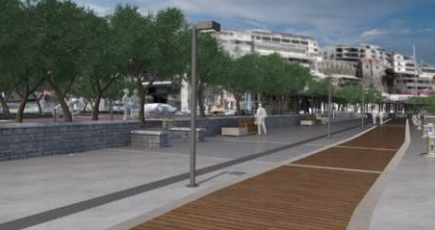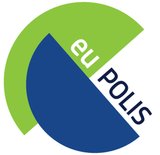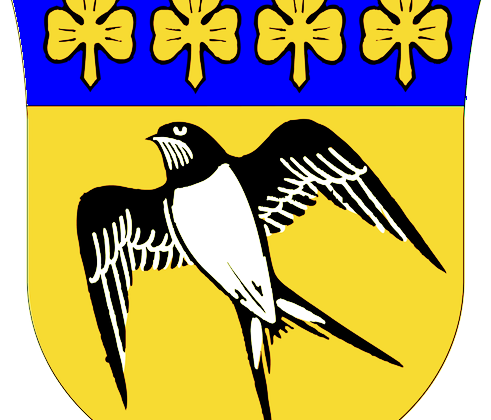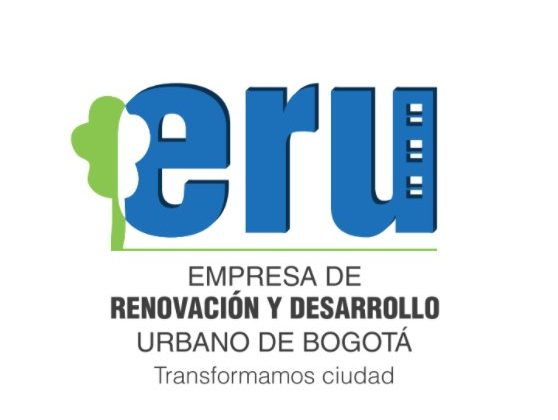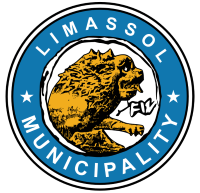City of Piraeus
Site Description
The port of Piraeus is the largest port in Greece and the city is one of the most densely populated in Europe. Its passenger harbour area was for long time “in the need of upgrade” in many aspects. In euPOLIS, we will use 3 mutually interlinked neighbouring sites at the main harbour promenade (Mikolimano) area and close to it. Although close to each other these 3 micro-locations have different characteristics, visibility, stage of development and need for interventions. These 3 sites are (1) Seaside Promenade Mikrolimano area, (2) The riverine inland area in Akti Dilaveri, and (3) the Ralio Complex Pilot School (RCPS) located in the same neighbour. Microlimano has an existing running construction project (code 7308/399) of the waterfront promenade upgrade that will be delivered by Easter 2020. This includes: release of the beachfront front from the shop-tables and the construction of a mild pedestrian street by the sea, large sidewalks. The planning of this MF-NBS intervention that will supersede the exiting plan for Mikrolimano and additionally plan for new NBS infrastructure for the riverine inland area in Akti Dilaveri and RCPS.
Health/Environmental/Social issues
The major environmental challenges are lack of open green spaces and parks, the highdensity buildings (old ones, most of them categorised as Cultural Heritage), as well as narrow streets with small pedestrian free space (warmed-up by air conditioners’ hot air exhaust), high level of air pollution (due to the ships emissions). There is not enough shading for protection of pedestrians against direct solar radiation and other UHI effects in summer, which, as deterrent, severely reduces the number of visitors to the site in summer, thus WB of the local population. Marine aquatic environment close to water promenade is “in the need of improvement” for both aesthetic and environmental conditions. The riverine inland area in Akti Dilaveri, although directly connected to the promenade, is underdeveloped with polluted water. The economic activity of the city shows strong recessional tendencies. The social cohesion of Piraeus has been affected from high unemployment rate, increased economically non-active population lack of SME business opportunities and substantial “people friendly” welfare structures. The green space per capita is very low (approx. 0.83 m2/person).
Demonstration activities
The existing construction project for Mikrolimano concerns the renovation of 15,600 m2 for which there is a signed programming agreement with the region of Attica with a budget of € 5.7 million €. The design and signed contract of this project framework is done by conventional urban regeneration. It includes the release of the beachfront front from the shop-tables and the construction of a pedestrian eco-friendly street by the sea, and Greek traditional material must be used for the construction. It includes “slow cars passing construction road made from Greek flat rock tiles” with large sidewalks, free public green areas of promenade, benches for the citizens to socialize made from Greek marble, wooden sidewalk and recreation within natural environment. The project will result in more MF free public green areas of promenade, in the neighbouring streets. Special attention will be paid to combining preserved values of traditional Greek heritage (existing project) with providing attractive improved microclimate environment (cooler in summer) for both local residents and visitors. The rehabilitation of the coastal waterfront promenade of Mikrolimano will include: 1. Introduction of MF and acceptable types of Mediterranean types of pollution mitigating vegetation (acceptable trees) in open green spaces: horizontal greenery, bushes, (including planters) for both improvements of micro climate and reduction of air pollution; 2. Evaporatively cooled corridors, accesses and pathways; 3. Innovative technology with eco-friendly multifunctional canopies with climbing vegetation and VF, 4. Creation of NBS public places conducive to small business for new job creation opportunities. Two more significant interventions will take place: (i) Extention of the coastal promenade to the riverine area closer to the Sailing Boat Marina and Athletic Area in the Akti Dilaver. This is a unique opportunity to implement innovative planning based on euPOLIS systemic matrixes. In its new euPOLIS enabled life, this major „estaury“ will benefit from „aquatic/terrestrial interface“. This part of the Mikrolimano will be used as a demo site for training of local planners on integrated pre-planning application with ful support of euPOLIS team. Live vegetation covered MF-NBS canopies encompassing info-points will be established in several places and in the area that “merges” the running Promenade with Akti Dilaveri. This will include places, where people can be protected from direct solar exposure, socialise, sit, wait, relax, recharge batteries (electronic), socialising, enjoy the freshness of scent gardens, etc. The monitors will be used for demonstrating the NBS methods’ benefits and development in n-RT. (ii) Coastal BG sea bottom marine aquatic biotope with euPOLIS -NBS (synergy of NBS for terrestrial and aquatic ecosystems). BG marine aquatic sea bottom will be located at the interface of the coastline and “riverine” area in Akti Dilaveri on the way to the RSCP. It aims at” cleaning-up” and populating near shore underwater environment with marin aqautic BG concept. This way city-ports have succeeded to make many former heavily polluted/ex harbor underwater areas attractive, clean and eco-friendly15. To the best of the proposers knowledge, the site in Piraeus will be the first international case, where the synergy between terrestrial and aquatic meet and interact. In the area of RCPS, we will introduce a Pocket Park in the wide sidewalk. An educational eco centre for promotion of NBS will be established. Inter alia it will include small scale grey water treatment module (from showers, handwashing sinks, wash machines) so that treated effluent (grey water) from the school can be used for supporting (irrigating/watering during dry rainless periods) local greenery and urban vertical farming, multiple water recycling, herbs production and recycling, ecologic, educational, demo functions having positive impacts to urban areas, 6. Creation of accessible space in the school library (“bibliotheca”) (both conventional and e-books) on MF roof gardens, 7. Creation of accessible Vertical farming on the walls of the school bibliotheca and a mini Biotope node, 9. It will have strong links with BG Marine Underwater site for the links of the coastal underwater environment with terrestrial NBSs.
